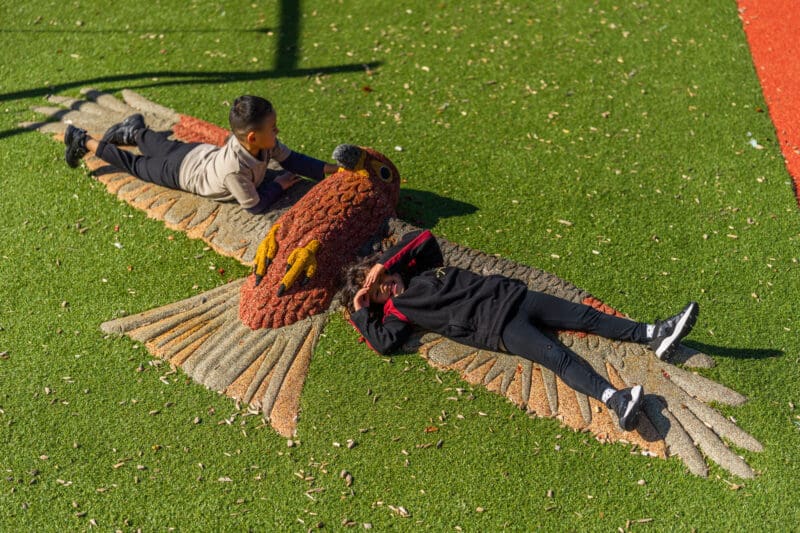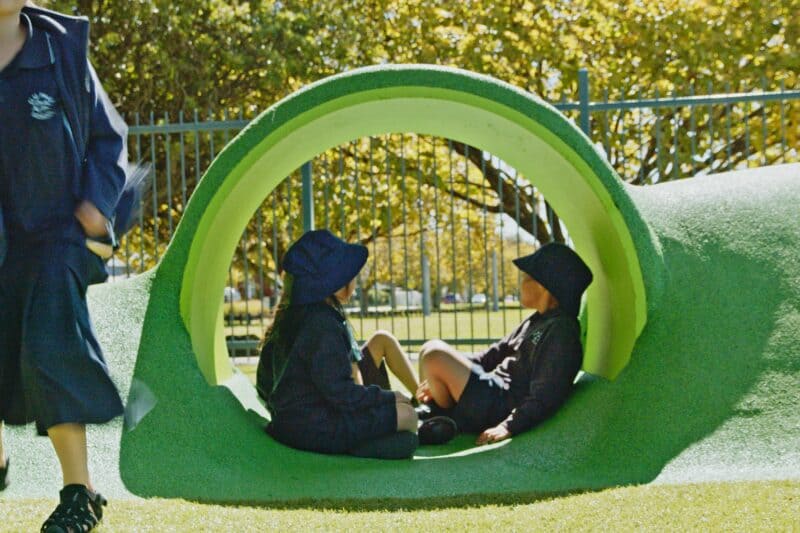Introduction
Wet-pour rubber surfacing is the go-to choice for many schools, early learning centres and public spaces. Its smooth finish, customisable designs, and durability make it a favourite.
However, wet pour rubber’s primary concern is whether it gets hot. This article will answer this question and give you a few tips on preventing such a problem.
Does wet pour rubber gets hot?
Like many surfaces, wet pour rubber is not immune to the effects of the sun. Its temperature can vary based on several factors, including the intensity and duration of sunlight it receives.
In regions experiencing hot summers or those located closer to the equator, prolonged sun exposure can inevitably cause the surface to warm up. However, it’s worth noting that while wet pour rubber may retain some heat, it doesn’t tend to become as scorching as alternatives like asphalt or metal.
Is it safe when it's hot?
The safety of wet pour rubber is not only about its temperature but also chemical stability under heat. Rosehill TPV, supplied by Creo, is a non-toxic material. It doesn’t contain harmful materials such as nitrate and sulphur compounds, being safe for the environment and native life.
But physical comfort is another concern. Like any other surface, care is necessary when playing on these surfaces. It is entirely safe if users take care when walking on these surfaces.
How to prevent it from getting hot: The warmth of a wet-pour rubber surface can be mitigated with a bit of foresight and strategic planning.
Choosing the right colours: In areas without shade, consider installing lighter colours to prevent heat absorption. Leave darker colours for shaded areas where heat absorption is lower.
Shading: Well-designed play areas balance open spaces with shaded regions. Utilising trees, overhead canopies, or sail shades can keep wet pour rubber surfaces comfortably cool.
This ensures comfort and extends the installation’s life by reducing UV wear. Choosing high-quality rubber, like TPV, is essential when maintaining the surface colour.
Is it eco-friendly?
This surface is not just about aesthetics and functionality; it has a green side, too. A significant portion of wet pour rubber is made from recycled tire rubber. This gives old materials new life and contributes to a more sustainable construction approach.
The material’s porous nature also ensures efficient water drainage, reducing puddle formation and improving stormwater management.

Conclusion
Wet-pour rubber has rightfully claimed its place in modern playground design. While it’s essential to acknowledge and prepare for its potential to warm up under intense sunlight, just like any other type of surfacing, its advantages in safety, aesthetics, and environmental impact cannot be understated.
By integrating preventive measures like shade and colour choice and recognising the material’s green credentials, playgrounds can offer fun and safety, regardless of the soaring temperatures outside.
Read our portfolio below if you want to get ideas for your next surfacing project. Or if you are ready to take the next step, call us on 0800 000 334 or book a site visit.





